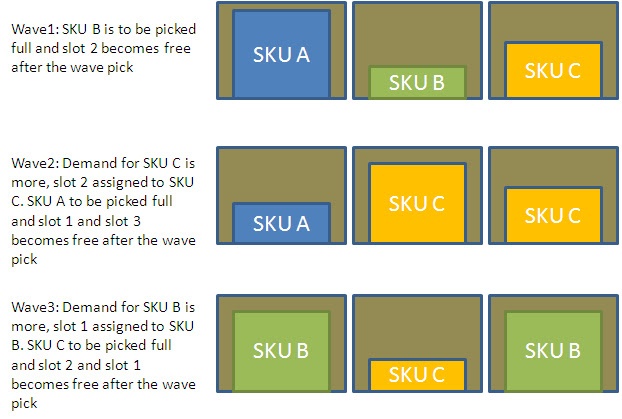Slotting is the process of
assigning items to specific pick face locations in order to gain productivity,
efficiency and accuracy. Slotting systems are meant to monitor the activity in
the pick-zone and make recommendation on when to replenish, what to replenish
and where to replenish.
In conventional slotting several attributes like the velocity of the product, order affinity with other
products in the warehouse, nature and weight of the products, location
dimensions and capacity, distance from the shipping dock, accessibility of the
locations are taken into consideration.
Now let us see some of these
attributes in detail in order to understand the science behind the slotting
process.
Velocity of the product: The more the velocity it is better to
place them close to the shipping docks as the pick volume for the product is
more
Order Affinity: For example if baseball and bat are ordered
simultaneously and hence keeping them side by side reduces the travel time and
increases efficiency and productivity. On the other hand, if the products are
very similar keeping them separate
from each other increases the picking accuracy.
Nature and weight of the products: Heavier items are placed in the
beginning of the pick route rather than fragile items in order to avoid damages
to the products.
Accessibility of the location: Bulkier items need to be placed in
the lower level in order to reduce strains to the arms and the spine.
In conventional slotting the time
horizon is fairly long between each slotting cycle say every year the company
might want to re-slot its locations. Most of the times operations are stopped
and re-slotting plan gets executed independently of the orders in the system.
In dynamic slotting, the time horizons
are very short and the pick face realignments are dynamic in nature. It runs
with the assumption of the levels of inventory in each of the existing slots is
known and when they will be picked to zero is also known. That means the demand
is known well in advance and the order or wave planning happens much ahead of
actual picking time. In dynamic slotting the number of pick-faces per item is
also dynamic in nature depending on the demand and hence more efficiency is
gained compared to conventional static slotting.
An illustration with simple order
demand attribute is given below
While the above factors
contribute to the science of slotting, deciding on what are the factors that
needs to be considered is an art. Certain factors have more weightage over
others in a specific warehouse scenario. Sometimes it is simply may not be
possible to incorporate a parameter at the product level as it tend to become
too complex and fussy. In such cases factors can be considered at part family
levels. Many times practice makes perfection. The best way is to start
implementing the factors' contributions incrementally in the slotting plan. Thus
having a successful dynamic slotting plan is an art as well as a science.


No comments:
Post a Comment